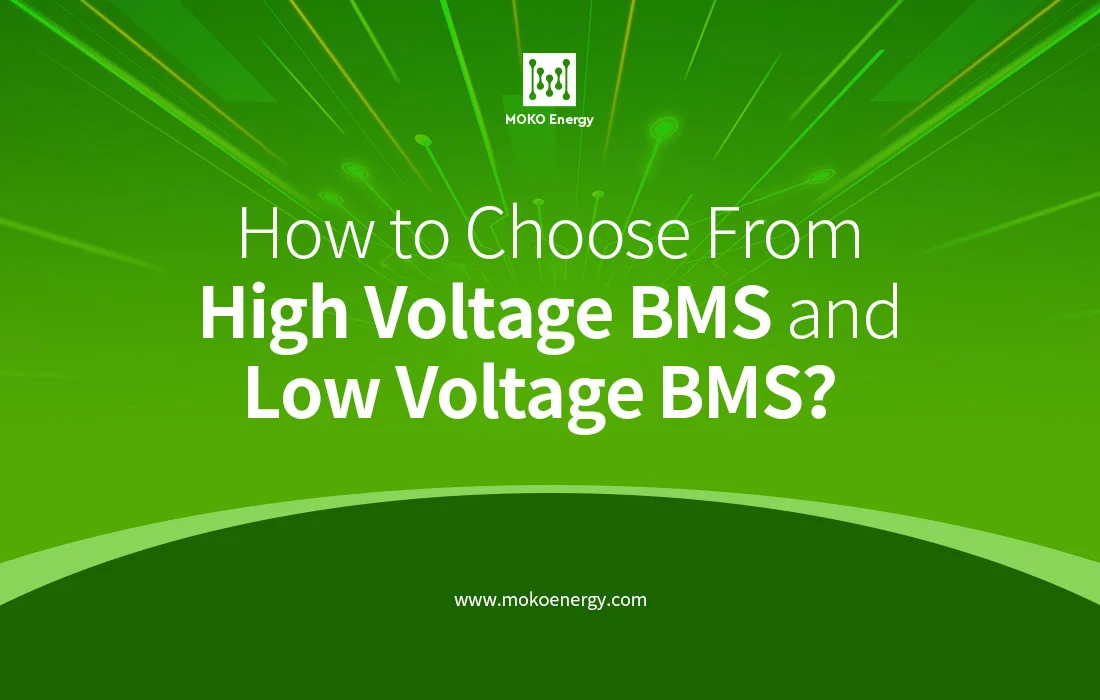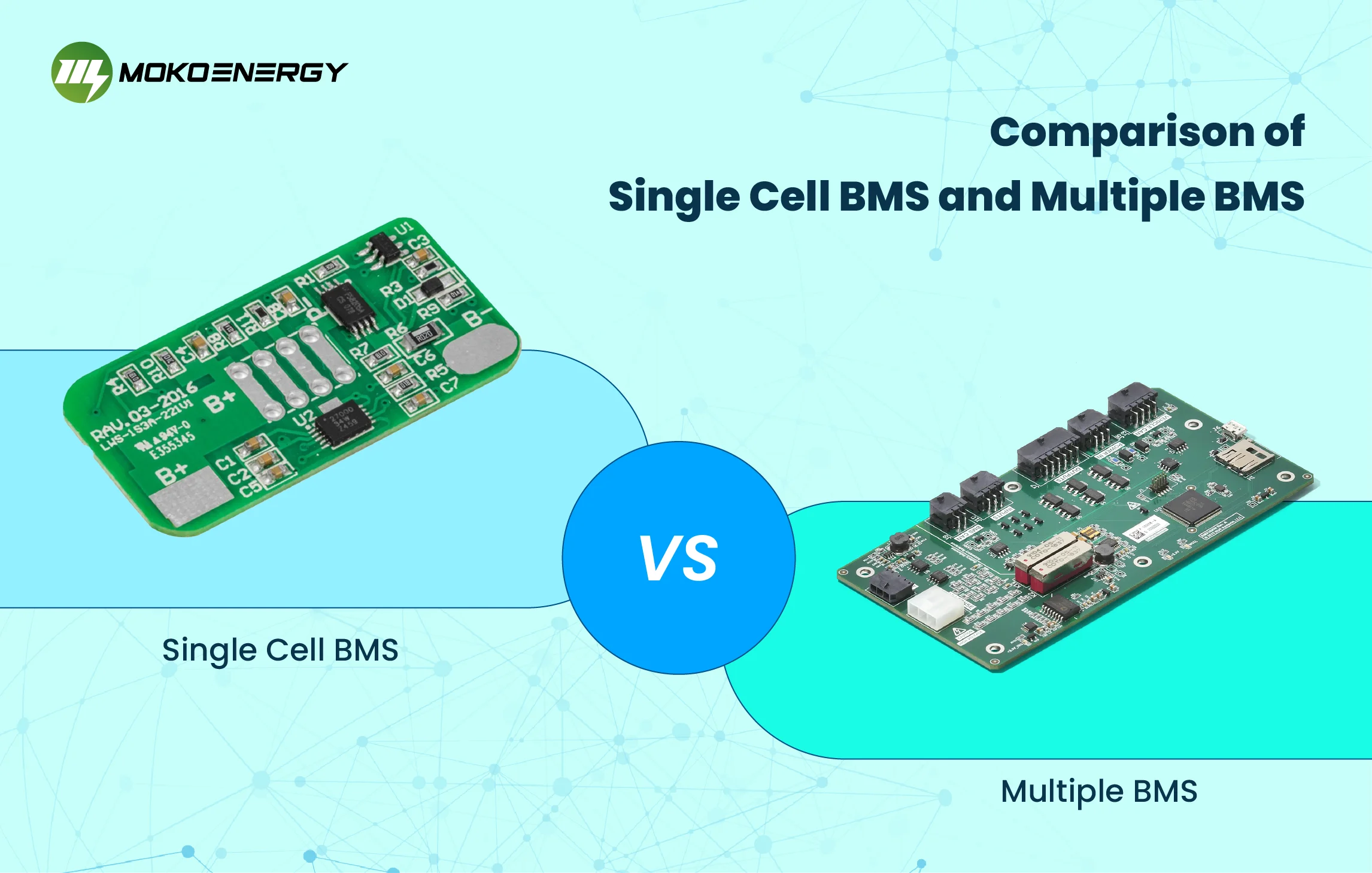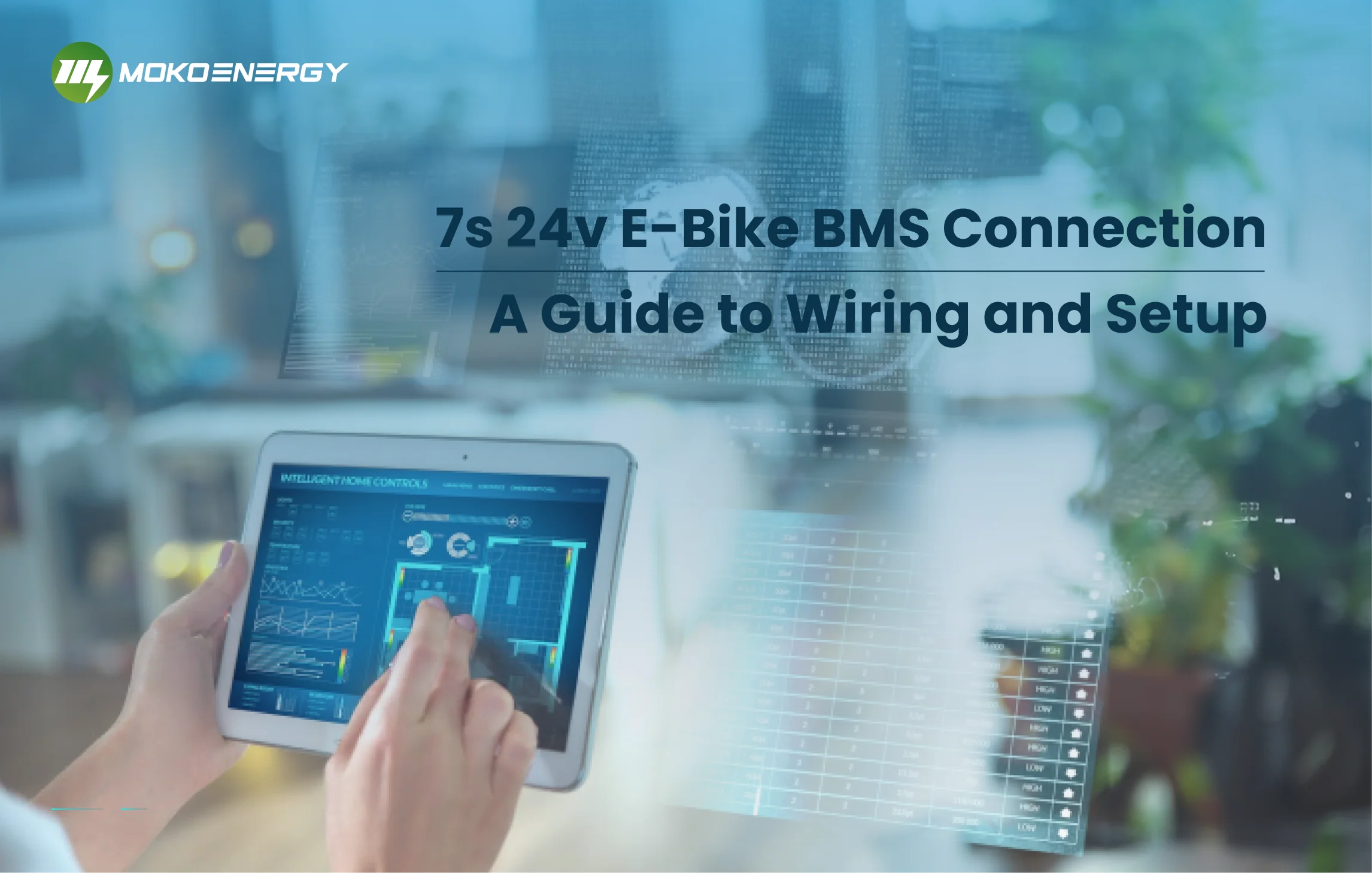The battery management system is an important part of all lithium-ion battery packs. When the battery pack runs alone, it is easy to suffer from the harm caused by overcharging or over-discharge, high temperature, or high pressure. With the help of battery management system, it can effectively help monitor the running status of the battery pack, and timely protect and optimize according to the abnormal situation, which plays a very important role. These battery packs can be categorized as either low voltage (LV) or high voltage (HV). Nowadays, both high voltage BMS and low voltage BMS are widely used, ranging from small portable devices to large energy storage systems. However, how to choose between HV BMS and LV BMS in the application? When do you need a high voltage BMS and when do you need a low voltage BMS? How are they different? In this blog, let’s learn the differences between low voltage, components, topology, and applications to help you make a better choice.
What is High and Low Voltage BMS?
High-voltage BMS and low-voltage BMS are two different types of battery management systems that are used to monitor, manage, and protect the critical components of a battery pack, but they are suitable for battery systems with different voltage ranges respectively. Here’s a look at them in more detail:
High Voltage Battery Management System
High voltage BMS is an electronic system dedicated to different types of batteries such as high voltage lithium ion battery, lithium iron phosphate battery BMS, energy storage battery BMS, and UPS battery BMS. It is suitable for battery systems with higher voltage and is usually used for applications where the battery cell voltage is above 4.2 volts. The HV BMS is responsible for monitoring the voltage, current, temperature, and status of each battery cell, as well as implementing charge and discharge control, balance, and protection. It is commonly used in high energy density applications such as high voltage electric vehicles and large energy storage systems.
Low Voltage Battery Management System
Low voltage BMS is an electronic system dedicated to different types of batteries such as lithium-ion battery BMS, lithium polymer battery BMS, lead-acid battery BMS, lithium iron phosphate (LiFePO4) battery BMS, and NiMH battery BMS. It is suitable for battery systems with lower voltage and is usually used for applications where the battery cell voltage is below 4.2 volts. The low-voltage battery management system is similarly responsible for monitoring and managing battery parameters, but it is designed with a greater focus on safety, stability, and simplicity. This type of BMS is commonly found in home energy storage systems, small mobile devices, and low-power applications.
However, whether it is a high voltage battery management system or a low voltage battery management system, their goal is to ensure and improve the performance, safety, and life of the battery system. They monitor the status of the battery in real-time and take appropriate control and protection measures once abnormalities are found to help optimize problems arising during battery charging and discharging, prevent dangerous conditions caused by undesirable conditions such as excessive battery charging and discharging, BMS over voltage and overtemperature, and coordinate voltage differences among battery cells, thus improving the performance and reliability of the entire battery pack.
Different Voltage of LV and HV BMS
The main difference between high and low voltage BMS is the voltage difference. Voltages below 30 VAC and 60 VDC are designated as “low voltage”. LV 112-1 introduces three voltage categories, which align with ISO 6469-3’s class A and B distinctions:
LV Class 1: Up to 30 VAC and up to 60 VDC
HV Class 2: Up to 600 VAC and up to 900 VDC
HV Class 3: Up to 1000 VAC and up to 1500 VDC
LV battery packs find common applications in light electric and hybrid vehicles, as well as two and three-wheelers. On the other hand, HV battery packs are primarily employed in traction scenarios for electric vehicles and stationary setups within Energy Storage Systems (ESS).
HV battery packs are characterized by an extensive arrangement of lithium-ion cells, interconnected both in series and parallel configurations to establish the overall voltage and capacity of the pack. All battery packs are overseen by a high-voltage BMS system. As an illustration, a high voltage battery pack installed in a hybrid bus, rated at 400V and 20kWh, assembled from LiFePo4 3.2V 50Ah battery cells, would encompass approximately 125 cells arranged in series and 1 cell in parallel, resulting in a total cell count of 125 units in a 125S1P configuration.
Different Components of LV and HV BMS
High voltage (HV) BMS differ somewhat from low voltage (LV) BMS in components mainly because they are suitable for different battery systems, with different voltage ranges and specific application requirements. Here are some of the main differences they may have in components:
The number of battery modules and cells: High-voltage BMS are typically used in battery systems with higher voltages (typically more than 4.2 volts), so the number of battery cells in the battery module may be small and the voltage per cell high. Low-voltage BMS is suitable for battery systems with lower voltages (typically below 4.2 volts), so more cells may be required, each with a lower voltage.
Voltage measurements and sensors: High-voltage BMS require more accurate and high-voltage resistant voltage sensors and measuring devices to ensure accurate monitoring of battery pack status. The voltage sensors required for the low-voltage BMS do not require such high-performance requirements.
Current measurement: Current in high voltage systems can be low, so current sensors need to be adapted for accurate measurement in a small range. The current may be higher in low-voltage systems, requiring a wider range of current sensors.
Relays and protection devices: High voltage battery BMS may require more high voltage resistant relays and protection devices to cope with fault situations in high voltage environments. The relays and protection devices of a low voltage BMS may be relatively small and suitable for low voltage environments.
Different Topologies for LV and HV BMS
High Voltage Decentralized BMS
A high voltage BMS is comprised of numerous cells, indicating the presence of a significant quantity of wires emanating from these cells to connect with the BMS. This complexity results in increased intricacy when it comes to assembling, overseeing, and maintaining these high-voltage battery packs. The decentralized BMS architecture can better help HV BMS to solve these problems. Usually, the quantity of battery monitoring inputs in a centralized battery management system remains constant. However, in decentralized battery management systems, it’s possible to stack numerous battery monitoring units. As a result, a decentralized BMS offers greater flexibility, as it can be adapted by modifying the number of battery monitoring units, even when the quantity of cells within the battery pack fluctuates. In addition, the decentralized BMS system can maintain the monitoring and control of other parts when a single battery unit or module fails, thus reducing the impact of the failure on the whole system.
Low Voltage Modular BMS
Low-voltage battery systems typically consist of multiple battery cells, while modular BMS systems can distribute monitoring and control functions to each battery cell or group. This enables each cell to monitor its status in real-time and control and protect it when needed. This distributed approach allows for a more refined management of the battery system, ensuring that each individual is in optimal condition. Alternatively, modular BMS can be easily customized at different power and voltage levels by connecting different numbers of building blocks together and plugging them directly into applications. Easy-to-modify modular systems and support for variable battery counts offer greater advantages over centralized systems.
Different Applications of High Voltage and Low Voltage Applications
High Voltage Applications
HV BMS is widely used in energy storage solutions, home energy storage BMS, UPS (uninterruptible power supply), and other fields, and is an important part to ensure the normal operation of equipment and user safety. Among them, energy storage battery BMS plays a crucial role in the field of energy storage, which can ensure the performance and life of energy storage battery systems. Home energy storage BMS is a new type of energy storage equipment rising in recent years, which can provide a stable and reliable power supply for families, reduce energy waste, and has a good market prospect. UPS battery BMS is an important part of ensuring the continuity of power supply in the power system, which can provide stable backup power in the event of power failure or grid failure.
Low Voltage Applications
Low-voltage BMS similarly play an important role in multiple domains, and although their application range may not be as broad as that of high-voltage BMS, there are also many key application areas. Low-voltage BMS are often used in mobile devices such as smartphones, tablets, and handheld tools to monitor and manage battery status and ensure the normal operation of devices and the safety of users. Although HV BMS are widely used in the energy storage space, certain home energy storage solutions may use low-voltage battery systems such as lithium iron phosphate (LiFePO4) batteries. Low-voltage BMS can ensure battery performance and safety in home energy storage systems. For small-scale solar charging solutions, such as portable chargers in camping, and outdoor activities, low-voltage BMS can monitor and manage the battery charging and discharging process, providing users with a reliable source of energy.

Safety and Protection in High Voltage BMS
There are many differences between high voltage and low voltage, and high voltage is more widely used and more efficient in life. However, at the same time, there are also some areas that we must pay attention to in the HV BMS design, such as safety and protection. Let’s focus on the safety and protection of HV BMS.
Importance of Short Circuit Protection and Thermal Management in High Voltage BMS
Short circuit protection and thermal management are key aspects to ensure the safety of HV BMS. Short circuit protection protects battery packs and electronics from damage caused by accidental low-resistance connections. Measures such as fuses and circuit breakers can prevent short circuits and protect the battery and system. Thermal management regulates the battery temperature within a safe range. Temperature detectors, cooling mechanisms, and insulating barriers work together to prevent excessive heat buildup, thus safeguarding battery efficiency and longevity.
Ensuring Safe Operation and Preventing Over-Discharge in BMS
Ensuring secure functioning and preventing excessive discharge is critical in HV battery setups. The Battery Management System (BMS) oversees the state of charge (SOC) to avert undue discharges, safeguard battery well-being, and maintain capacity. By gauging voltage and current, the BMS gauges remaining capacity and prompts protective actions to avert over-discharge. This guarantees safe operation and optimizes battery longevity.
How to Choose From High Voltage BMS and Low Voltage BMS?
Through the comparison of the above four chapters, we can see that there are many differences between high-pressure and low-pressure BMS, so what factors must be considered when choosing between the two? Here are some things to consider:
Voltage Requirements: The first and most critical consideration is the voltage of your battery system. If your battery system operates with voltages above 4.2 volts per cell, you might need a high-voltage BMS. If the voltage is below 4.2 volts per cell, a low voltage BMS could be suitable.
Application Type: High voltage BMS is commonly used in electric vehicles, large-scale energy storage systems, and other high-power applications. Low voltage BMS is often found in consumer electronics, portable devices, and small-scale energy storage projects.
Safety and Regulations: High voltage systems tend to carry higher safety risks due to the potential for higher energy discharge. Ensure that your chosen BMS meets safety regulations and standards for your application.
Component Compatibility: Ensure that the BMS components, such as sensors, communication modules, and controllers, are compatible with the voltage range of your battery system.
Cost Considerations: HV BMS systems might involve more advanced components and safety measures, which can lead to higher costs. Evaluate your budget and ensure that the selected BMS fits within it.
System Integration: Evaluate how easily the chosen BMS integrates with your existing or planned system architecture, including communication protocols and software interfaces.
Environmental Conditions: Consider the operating environment for your battery system. High-voltage systems might require additional precautions for insulation, cooling, or heating in extreme conditions.
Conclusion
In the dynamic realm of energy storage, the choice between high-voltage BMS and low voltage BMS is pivotal in achieving optimal performance, safety, and efficiency. High voltage systems excel in energy-intensive applications like electric vehicles and grid-scale storage, while low voltage systems shine in scenarios requiring safety, simplicity, and compatibility. As technology continues to evolve, a nuanced understanding of these BMS options will be essential in driving forward the clean energy revolution and shaping a sustainable future.
Collaborating with a group of professionals is crucial when tailoring BMS solutions. Firms such as MOKOEnergy, boasting over 17 years of proficiency in research, innovation, and production, furnish the necessary know-how for adapting HV BMS or low-voltage BMS solutions. With a seasoned team of R&D specialists and a resolute dedication to excellence, you can anticipate not just advanced technology, but also personalized assistance and unwavering commitment to customer contentment. Reach out to us today to converse about your distinct needs and uncover how our expertise can elevate your application.
CONTINUE READING ABOUT THE HIGH VOLTAGE BMS






